In 1832, an explorer by the name of Henry Rowe Schoolcraft and his men were guided by Ozawindib, a Chippewa Indian, to the source of the Mississippi River in northern Minnesota, a small, pristine lake surrounded by beautiful White and Red Pines. Not liking the Chippewa name Omushkos Sagaeigun or Elk Lake, Schoolcraft took the last four letters of the Latin word, veritas (truth) and the first two letters of the Latin word caput (head) and came up with Itasca as a new name that he felt more adequately described the significance of the lake that served as the true head of the Mississippi.
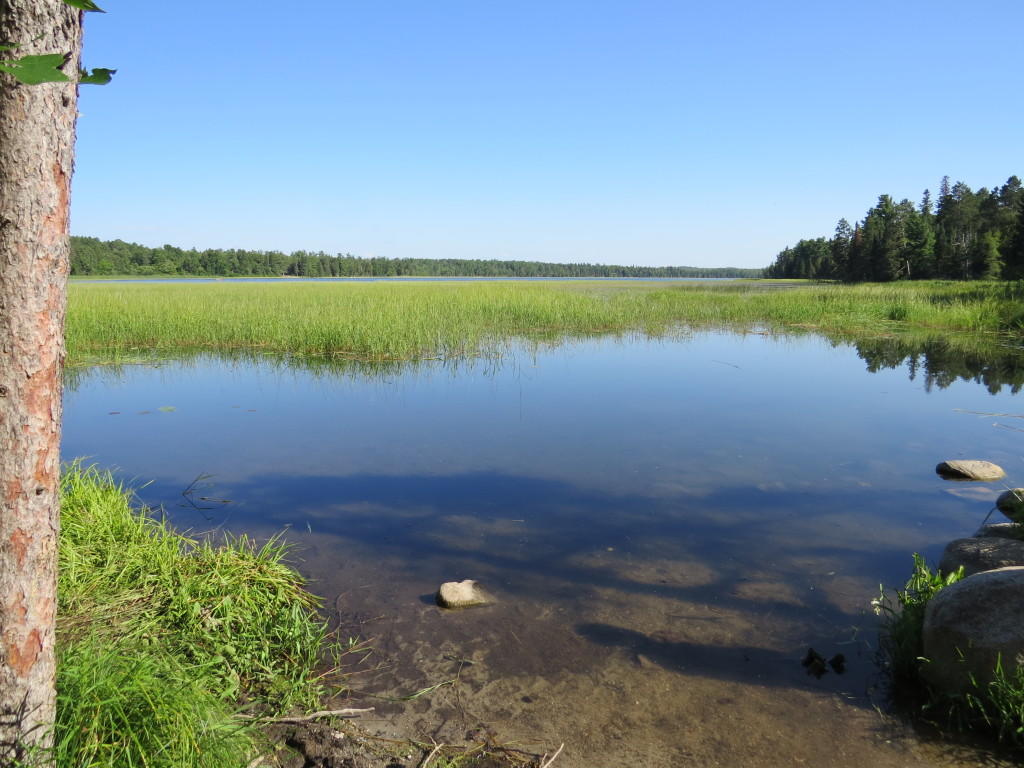 That’s it, right there–the rocks at the bottom right of the photo above mark the terminus of Lake Itasca and the beginning of the mighty Mississippi. Here massive hordes of humanity, some more clothed than others, take their turn walking, slipping, and selfie-ing across the rocks at the Mississippi Headwaters in Itasca State Park.
That’s it, right there–the rocks at the bottom right of the photo above mark the terminus of Lake Itasca and the beginning of the mighty Mississippi. Here massive hordes of humanity, some more clothed than others, take their turn walking, slipping, and selfie-ing across the rocks at the Mississippi Headwaters in Itasca State Park.
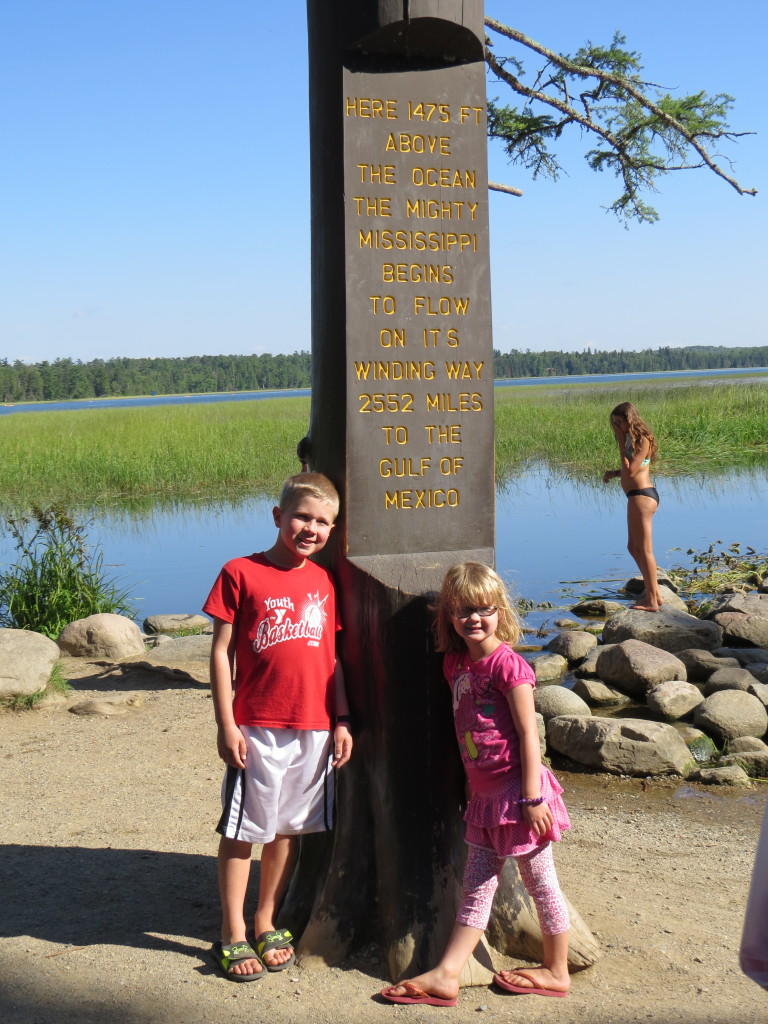 Getting a photo of your significant people making the famous 20-foot trek without other tourists in the frame is about as easy as seeing a Black-backed Woodpecker in the park. Of course, both become much easier in January…
Getting a photo of your significant people making the famous 20-foot trek without other tourists in the frame is about as easy as seeing a Black-backed Woodpecker in the park. Of course, both become much easier in January…
This time of year is more fun for kids, though.
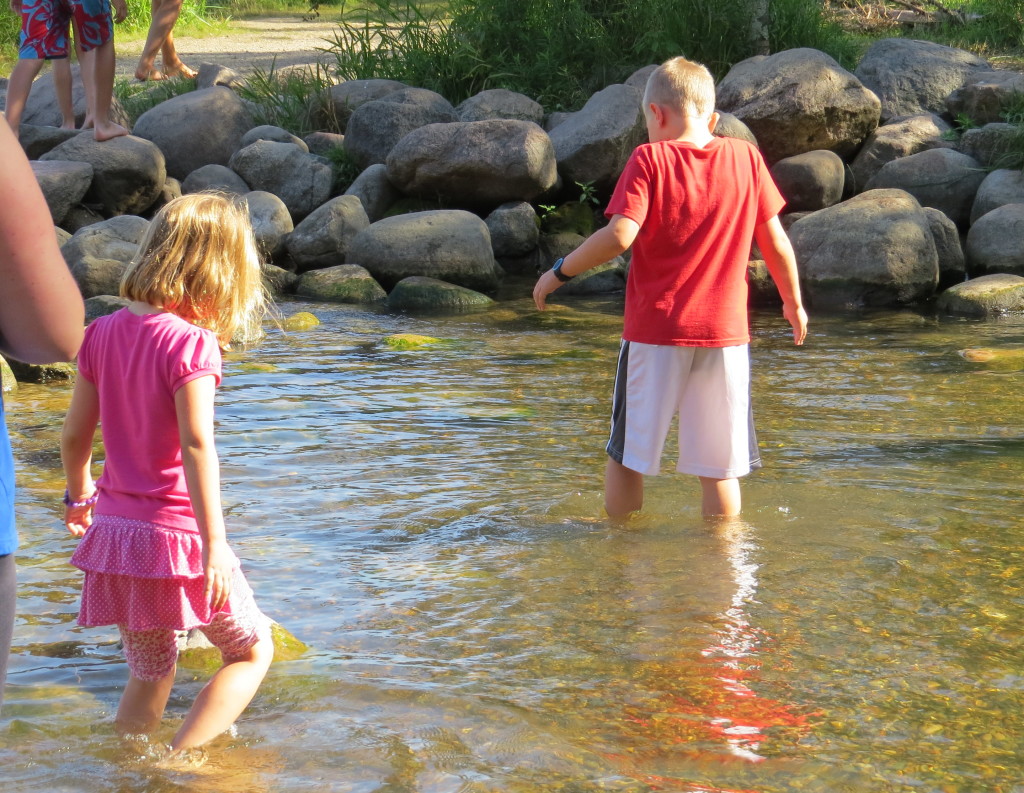
Evan and Marin crossing the Mississippi
Evan and Marin were not the only ones in our family being baptized this day as true Minnesotans–Melissa and I were embarrassingly also making our first walk across the headwaters. Though that, or the impressive virgin forests of towering Pines, should have been enough motivation to finally make it to Itasca, it was another Veritas Caput that served as the impetus to get us there–Mr. Bob Janssen, a.k.a. the godfather of Minnesota birding who literally wrote a book on the subject, was leading a bird walk at Itasca State Park. Call us groupies, call us super-fans, but we were in.
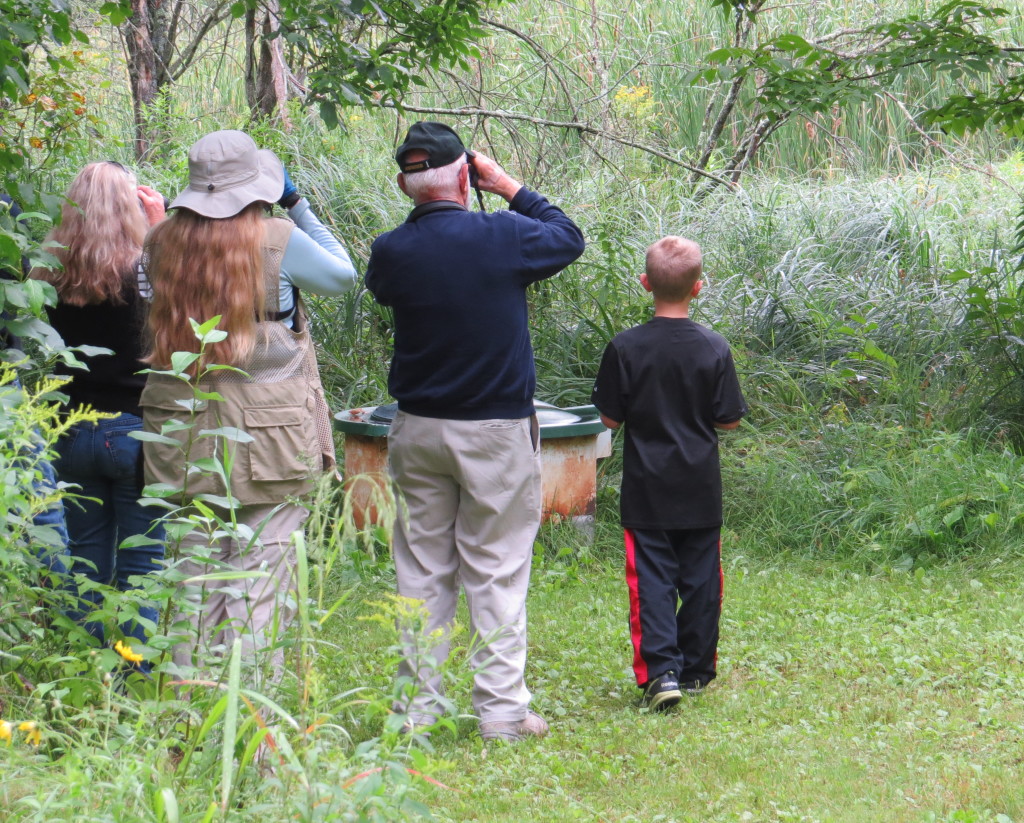
Evan birding with Bob Janssen–Again!
The truth is that due to a rough night in the camper for all of us, we slept in and missed meeting up with Bob’s group to begin the bird walk. Oh well, I thought, I’ve birded with Bob before and this was more or less a beginner’s bird walk. I reasoned that Evan would have the same reaction since birds aren’t that big of a deal to him anymore. I couldn’t have been more wrong. When he woke and found out we missed the walk, he was in tears. Apparently birds aren’t that big of a deal, but birds with BOB is still a really big deal. Ugh.
I told Evan we would try to find the group in the 32,000 acre park. I didn’t tell him that finding an American Three-toed Woodpecker would have been easier. But I had read the chapter on Itasca State Park in Bob’s Birds of Minnesota State Parks, and I had a pretty good guess of what trail we might find them on. Even still, we were an hour-and-a-half late. It was a long shot at best. Amazingly, and as you can tell from the photo above, we did stumble upon Bob Janssen and his followers. Whew!
We were just in time to catch the group to find out that the next stop was the Headwaters area at the far north end of the park. Evan and I had to make a stop at the campsite on the way where we snagged a pretty sweet FOY, the Broad-winged Hawk.
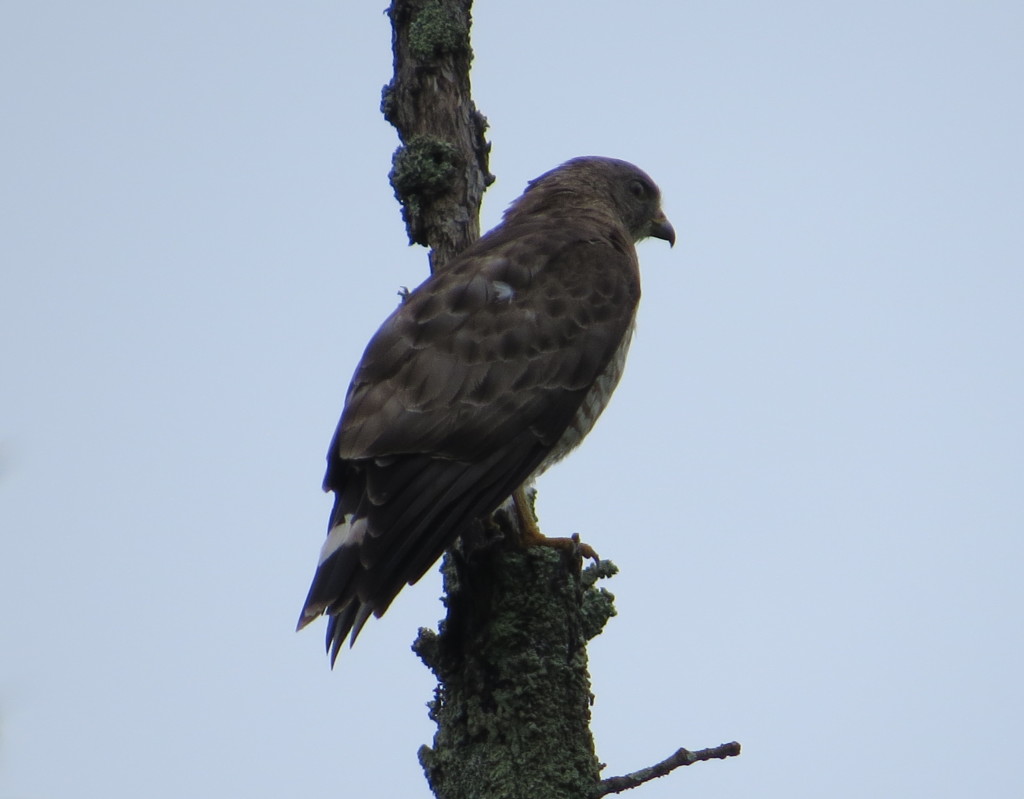
We finally met back up with our group at the Headwaters parking lot and began a leisurely walk looking and listening at…nothing. It was super quiet which was strange since fall migration should have been going on all around us. Now pay attention to this–if you want to be a better birder, go birding with people better at it than you. The quiet woods did not daunt the 84-years-young Bob. You don’t get to that age and that fame without acquiring a few tricks up your sleeve. Bob was listening intently for Chickadees. Wait, what?
As soon as Bob heard a couple Black-capped Chickadees, he pulled out his mp3 player and speaker and played an Eastern Screech-Owl mobbing tape. The recording is of a Screech giving its tremulo call and being mobbed by about a thousand pissed off Chickadees. What happened next is that the Chickadees in real life showed up with pitchforks and torches. That brings in the onlookers, the Warblers and Vireos. All the sudden we were swarmed with birds that didn’t even seem to exist a minute ago–Blackburnian Warblers, Northern Parulas, a Black-throated Green, Blue-headed Vireos were just a few.
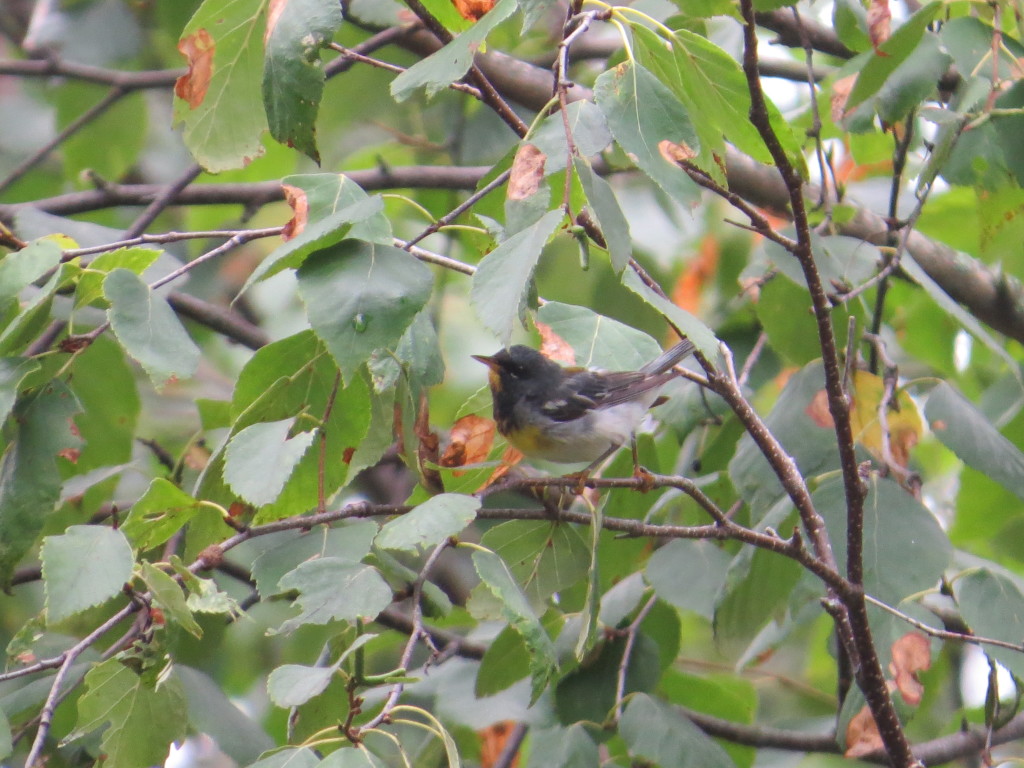 Though the light was bad and some birds were changing into their fall clothes, the flurry of activity kept it exciting even if it was just over binocular views. I did manage to photograph a cooperative juvenile Chestnut-sided Warbler. Just as some people aren’t fond of babies (the human kind), I am not found of juvenile birds. This one I found striking, however.
Though the light was bad and some birds were changing into their fall clothes, the flurry of activity kept it exciting even if it was just over binocular views. I did manage to photograph a cooperative juvenile Chestnut-sided Warbler. Just as some people aren’t fond of babies (the human kind), I am not found of juvenile birds. This one I found striking, however.
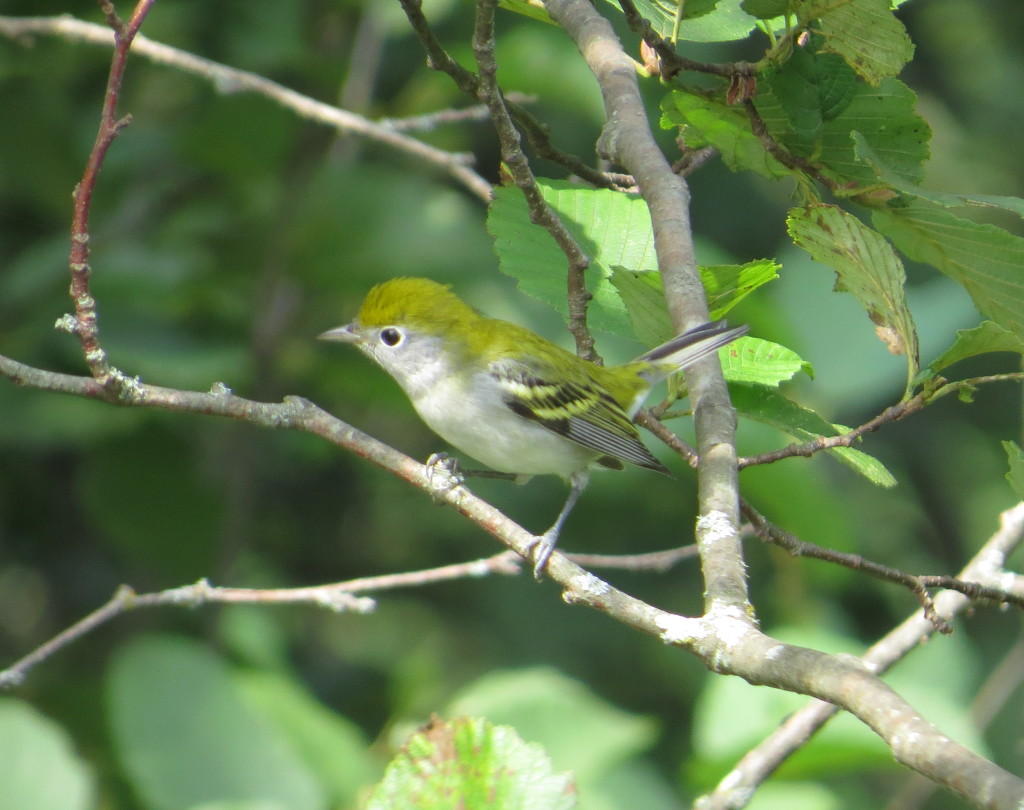
We made several stops to play the tape in somewhat open areas, like where a path crossed the Not-so-Mighty Mississippi:
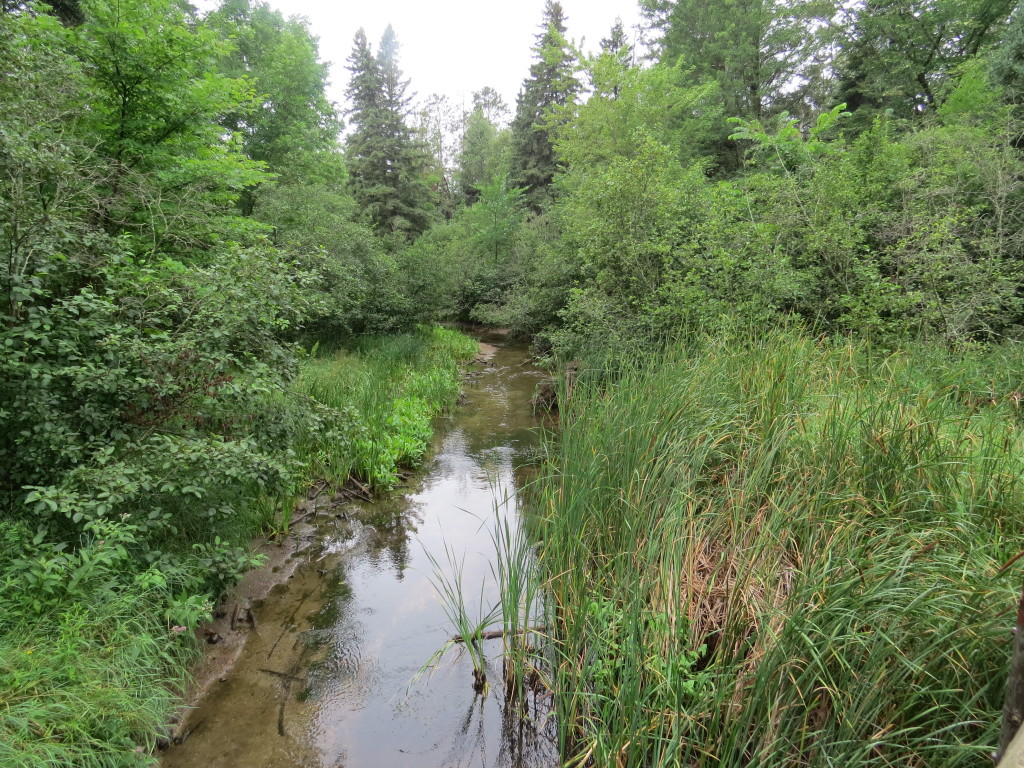
Fun Fact: The Mississippi flows north for several miles before it turns south.
Though many of us in the group called out sightings of birds, Bob himself had the best sighting even though I lack the photographic evidence to prove it–a beautiful male Golden-winged Warbler. It’s always a treat to see this bird that, if we did not have the Common Loon, would make a fine choice for a state bird, since Minnesota is responsible for hosting 47% of its breeding population. Fun Not-So-Fact: Once we hit 51%, MN will control GWWA conservation policies in North AND South America.
Like the Mississippi itself, all good things must come to an end, and we parted company with the group and said goodbye to Bob, vowing to meet up again over a Meeker County Snowy Owl or Kandiyohi County Blue Grosbeak, which has now become our customary goodbye. We declined to go to the book talk, though it would have been a chance for Bob to sign the book to me and not Evan this time. Letting bygones be bygones, it was time for Evan and I to go from birding mode back into just regular camping mode, exceptions being made, of course, for Northwoods chickens that cross the road.
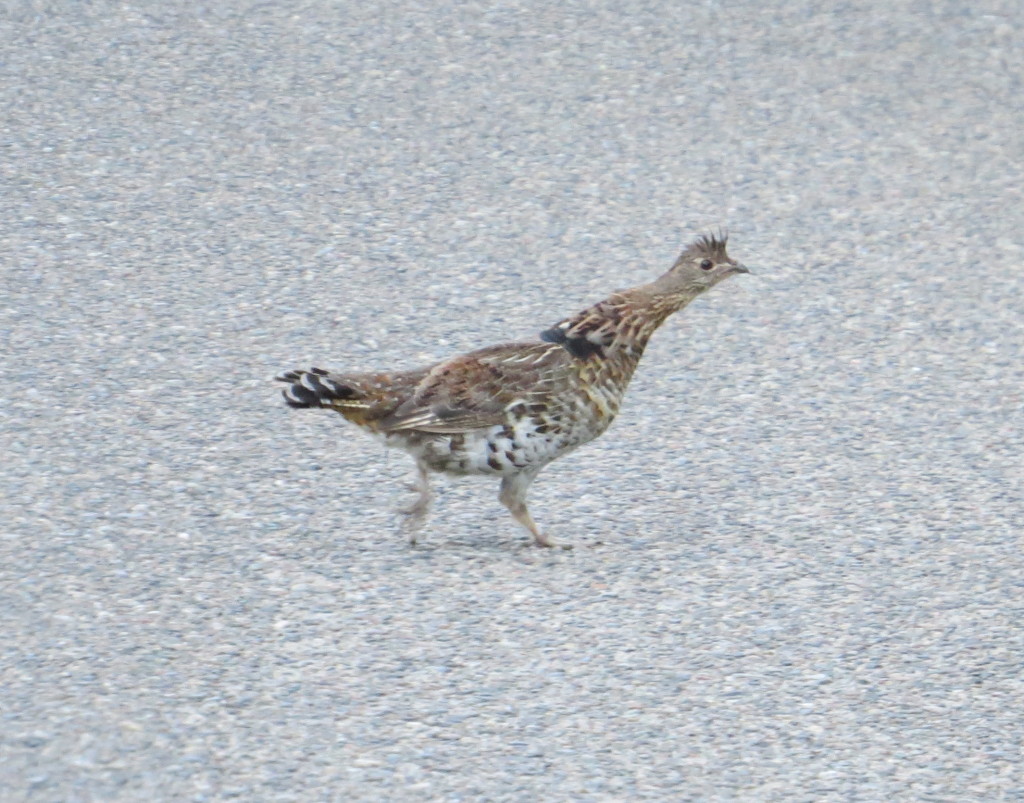
Ruffed Grouse
The Grouse and the aforementioned Broad-winged Hawk were year birds for me. Normally I wouldn’t care about such a thing, but with all my out-of-state travels I figured 2015 was my best chance of ever breaking 300 in a single year. I’m very close, but it’s still going to be a stretch. Thanks to Melissa who woke me up at 1 AM and alerted me to a calling Barred Owl, I made another stride toward my goal.
That goal, along with the mouth-watering prospect of seeing another Black-backed Woodpecker, propelled me to go on one last birding hike in the early morning on our last day of camping. Sadly, I did not encounter any of the shadowy Woodpeckers on Schoolcraft Trail, but I did find another year bird and get my first ever photos of a Brown Creeper.
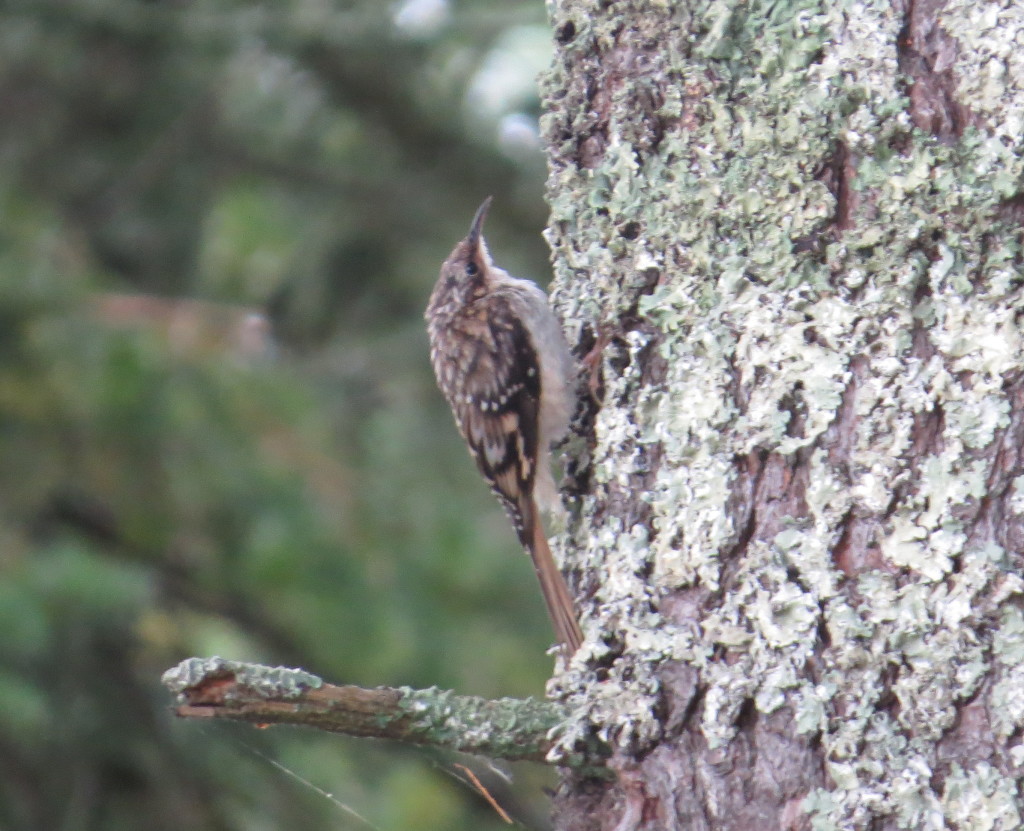
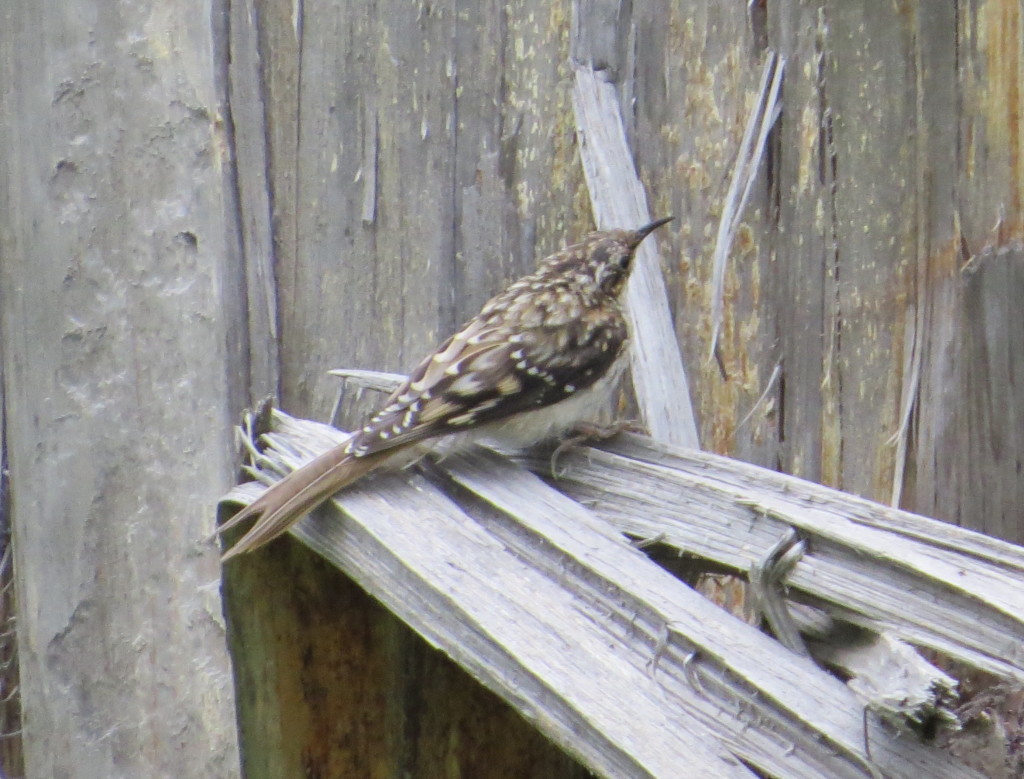
Birding with Bob, nabbing four year birds (one a photographic first), and crossing the Headwaters made for a great inaugural trip to Itasca State Park. I am quite remiss, though, that I did not show you pictures of the incredible Red and White Pines of the park. Come for the river, stay for the Pines, the t-shirts say. Next time, which I can guarantee you there will be a next time, there shall be pictures of the Pines, and if we are all lucky, there shall be Black-backed Woodpeckers on them!

I have Bob’s book. It has inspired me to want to get out and see more of MN’s state parks. How bad were the bugs?
Not too bad, but I always wear long sleeves, pants, and a hat.
These are my favorite parks (so far) for birding and aesthetics: Itasca, Temperance River, Whitewater, and Blue Mounds. There are, of course, many other great parks too.
Have you ever been to Glendalough?
Taking the family this weekend.
I didn’t know you needed a creeper. You should have visited me in January. 😉
Was the GWWA your FOY? They were one of my most common spring migrant warblers. (Though they only came through for one week.)
Glendalough, yes, but it was in my pre-birder and more importantly, my pre-kids days. So not only can I not comment on the birds, but I also cannot comment on the park at all seeing as how I spent my whole trip curled up with the Count of Monte Cristo. I can recommend that book. Then again, you have kids…and birds and are doomed to the same life of constant distraction. But good luck in all regards this weekend anyhow.
Not getting a photo of a Creeper is something that just, well, creeped up on me. They can be found fairly easy here if one puts forth a little effort. Negative on that being a FOY GWWA. You make me drool at the thought of common GWWA migrants. My sightings can be counted on one hand.
I’ve never been able to read much on vacations/getaways. Seems a misuse of gas and opportunity to explore new places. I’ll push myself on vacation only to pay for it later.
I’ve looked at the Glendalough map over the last few days and I’m quite excited to explore most of it (Maybe I’ll rent a bike to scout the best locations and then walk back to them later). Some good shallow vegetation-y lakes for grebes or ducks. A Western or Clark’s Grebe would be a lifer, as would a Canvasback. Hoping also for some waders and warblers.
If the birds aren’t happening for me, I’ve begun looking at mushrooms as a backup interest. If I can I.D. them, I can eat them (sometimes).
I couldn’t read at a new place either–birding has given me extreme ADD. The urge to explore and shift my vision constantly is strong.
You’re in the right country for WEGR. Clark’s would be a big time rarity. Cans are all over western MN during spring migration.
Good thing a lack of birds don’t stop your party, Mr. Fun Guy.
Glendalough bird report: Good mushrooms!
Too windy. I had a small mixed flock of warblers with at least YWAR, AMRE, BAWW, maybe WIWA. And I saw my first-ever Scaup outside of migration: three flushed up in front of me as I neared the big swampy all-nesting-habitat lake. And that was about it. Best bird of the trip may have been the Broad-winged Hawk juvenile sitting in the grass across the street from the gas station as we left our neighborhood.
If I wasn’t so Osprey-spoiled, they probably would have been a treat. SACR and TRUS were other things that I would have been really excited about two decades ago that are now just “neat”.
But the mushrooms: two sulfur shelves in the campground, one the paler species that grows out of the ground (so, the CACG equivalent?). Ate one for each breakfast, wrapped in bacon and cooked on forks over the fire. Another trail had chanterelles (lifer: picked & dried), lobster mushrooms (lifer, too buggy to eat), king boletes (MN first, one without bugs is now dried in my pantry), and many large sulfur shelves. Plus, a variety of mini puffballs (cooked upon return home), some lethal-looking amanitas, some pretty orange caps that stained my fingers when I handled them, some fairy rings that my girls asked me to do spore prints of, and some tiny little things (1/4″ max cap) growing out of the leaf litter in the campground.
LOVED reading your Itasca adventures!!! Makes me want to take a couple days off work and head up there! I took a trip up there with my mom & sister about 20 yrs ago and walked the rocks across? happy you met up with Bob…for Evan sake …and yours?
You won’t regret it, Lori. Sounds like you are overdue for a dose of Itasca. We’ve been talking about making it an annual odyssey. Those Pines!
I took a trip to the Minnesota North Woods before I was a birder… What amazing scenery. But I only wish I would have been looking out for the avifauna. Congrats on the Brown Creeper shots… I have found them to be incredibly tolerant of close approaches, often getting within just a few feet of them before they seem bothered. Is that the case up north?
Don’t beat yourself up, Greg…I lived up there for over decade, moved away, and then discovered that these things called warblers and northern owls are all over up there.
Re: Cooperative Creeps – Definitely not. They creep at quite a clip here; the cold necessitates it.